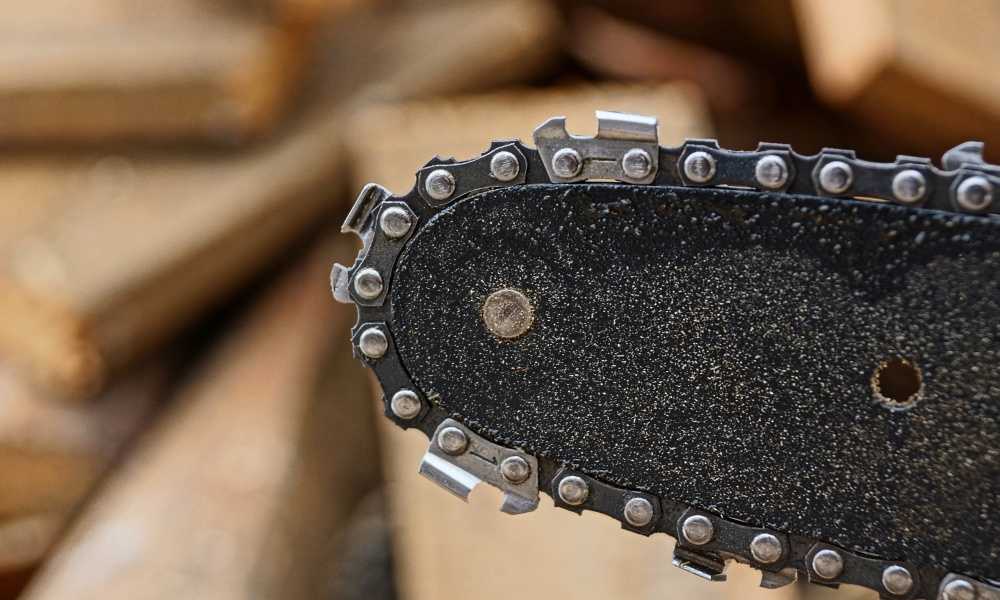A pole chain saw is a great way to remove high tree limbs and branches without dangerous tree climbing or risky ladders. Pole chain saws, as the name implies, put the cutting teeth of a chain saw at the end of a pole, while it can be controlled from the ground at the opposite end.
However, removing the risk of climbing doesn't mean that pole saws are completely safe, and it's still important to ensure that you use a pole chain saw correctly.
When to Use a Pole Chain Saw?
A pole chain saw is a specialty tool and is better suited to some conditions than others. Here's when a pole chain saw is the right tool for the job:

If you have stable footing on the ground
When using a pole chain saw, much of your attention is directed upward, at the point of cutting, and you need to be mindful that branches and debris are likely to fall down near and around you. Because of this, you cannot also be paying attention to your feet placement and balance.
If the ground is on a steep slope, slippery or muddy, or extremely rocky and uneven, it is not a good idea to use a pole chain saw.
If you are nowhere near a power line
One of the primary risks of using a pole chain saw is that you are allowing branches and debris to fall uncontrolled, unlike a professional arborist.
This uncontrolled descent poses a risk to you from things potentially falling and hurting you, but also the risk that you may suddenly move or jerk to avoid a branch, and briefly lose control of the chain saw. A pole chain saw should never be used anywhere near a power line.
If the branches you need to remove are less than 2 inches in diameter
A pole chain saw should only be used on smaller branches and limbs, and not on large, heavy branches.
If you already know how to safely make preliminary cuts and jump cuts
Preliminary cuts reduce the weight of the branch before you cut it, reducing the risk of injury from a falling heavy branch. Practice preliminary and jump cuts with a conventional chain saw, on the ground, with easily accessible limbs, so that you know exactly what to do with the pole chain saw.
Preliminary cuts should be placed a foot or more away from your intended final cut, so that they safely reduce weight, and so that if the bark peels away from the tree, you haven't injured or damaged the tree itself.
Jump cuts are small cuts made on the opposite side of where you will finally remove the branch, to prevent tearing and injuring the plant. Jump cuts determine where the limb will finally break and allow you to prune and trim in a way that protects both yourself and the plant you are working on.



How to Use a Pole Chain Saw?
If you are proficient and confident using a conventional chain saw and have a tree that is in the right position for a pole chain saw, here is how to use it.
- Clear a large work area below your intended cut. Remove any debris or trip hazards, and cordon off the area to prevent others from entering your work space.
- Plan your intended final cut and any preliminary or jump cuts you will need. Remember that jump cuts are typically on the underside of a branch and require you to work against gravity, so they are the most physically strenuous of your cuts. If you become tired, take a break and come back to the job later, rather than continuing to use a pole chain saw when you are tired or weak and have less control.
- Position the saw correctly. Using both hands, place the saw at your intended cut point, resting on the branch.
- Position yourself correctly. With the chain saw resting on the correct spot, check your footing for safety and stability, and angle yourself out of the path of any falling debris.
- Turn on the saw and make slow, controlled grooves. Making grooves in the branch prevents the pole chain saw from slipping sideways.
- Finish your cut. Once your blade is securely in a groove, you can increase your speed and finish the cut.
- After every cut, clean up the fallen limbs and give yourself a clear, safe work area before repeating the process.
